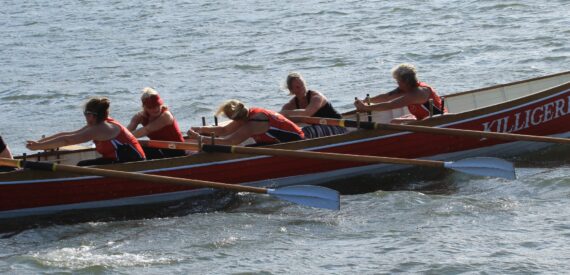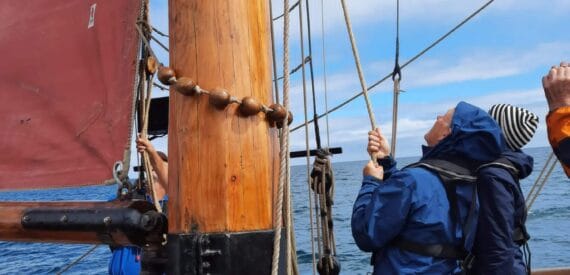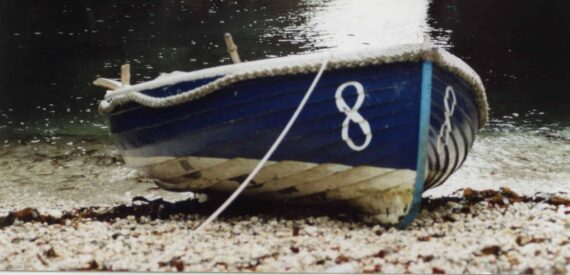The History of the anchor dates back millennia. The most ancient anchors were probably rocks and many rock anchors have been found dating from at least the Bronze Age.
Many modern moorings still rely on a large rock as the primary element of their design. However, using pure mass to resist the forces of a storm only works well as a permanent mooring. They are so big you can’t pick them up easily and carry them around to use were you want.
Early anchors were rocks with holes in them for securing to a rope, these rocks can still occasionally be found on the shores of Cornwall and many other seafaring nations.
The difficulty is how big a rock can you carry around compared to how well you want it to hold you to the seabed.
To stop smaller stones skidding over the seabed various devices were made that dug prongs into the ground.
This early Roman anchor is easily recognisable as a prototype fisherman’s anchor.
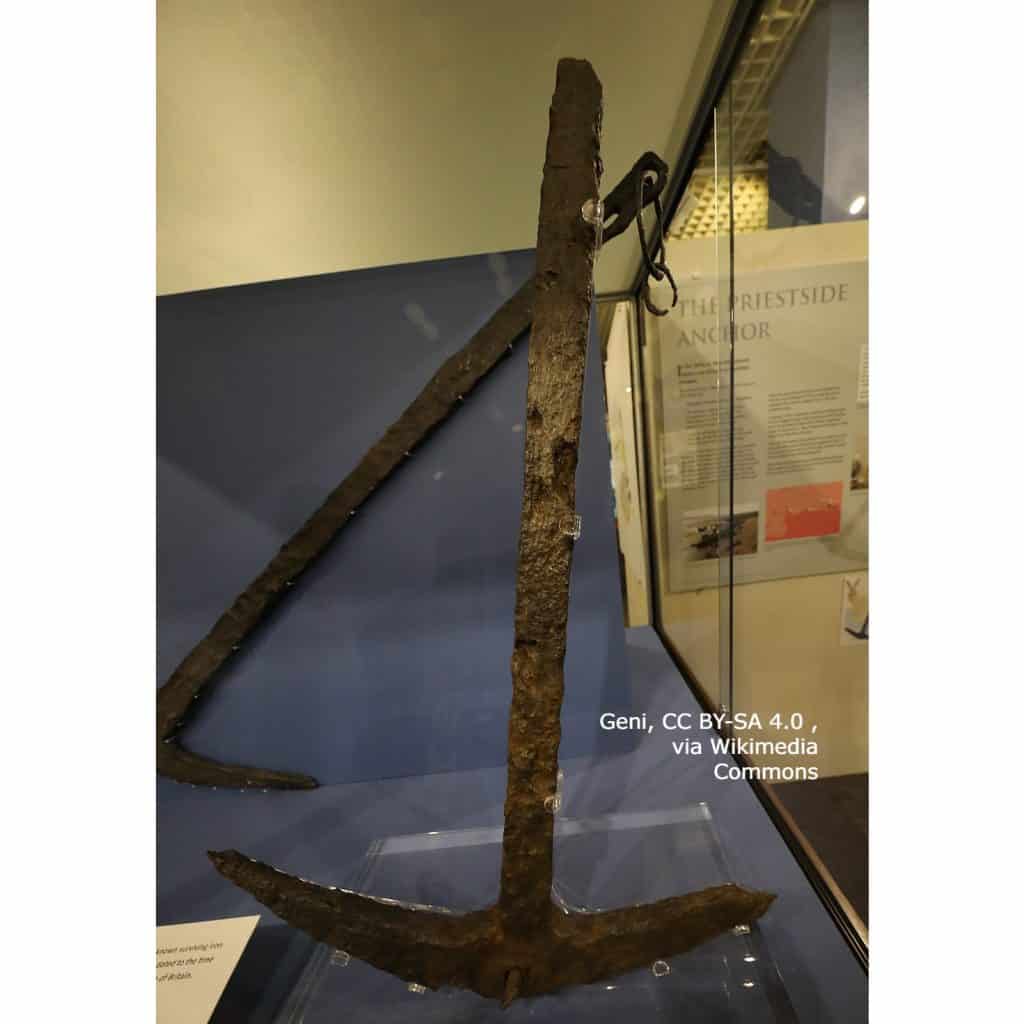
The technology to produce iron anchors was not widespread for a very long time so alternatives were made with various combinations of wood, rope, stone, and anything heavy, like a bag of sand, lumps of lead.
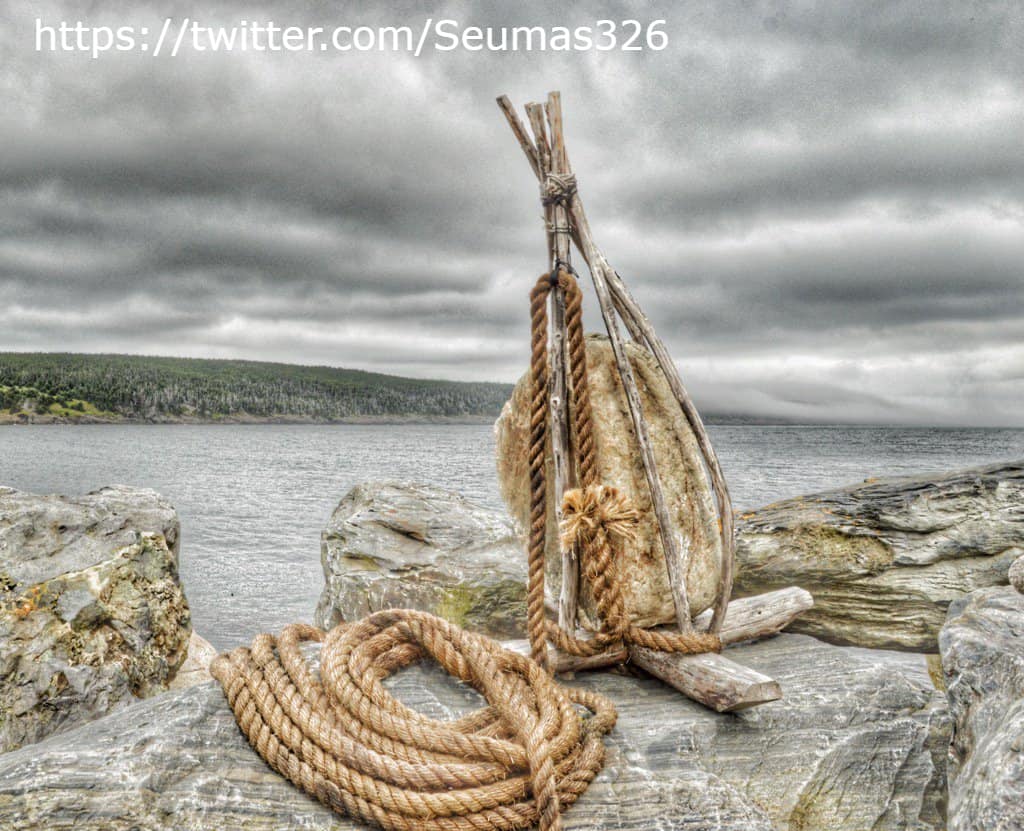
Size is important
In general the design of an anchor is related to the size of the vessel it is intended for. The design requires the anchor however it lands on the seabed to fall over as soon as it starts to move in such a way that a prong digs into the ground.
Once you have an anchor that sticks itself in the seabed you come to the next problem, how do you get it out again?
To pull the prongs out of the ground the rope or chain is hauled up vertically levering the prongs out of the ground.
To stop accidental removal of the prongs from the seabed there are techniques and rules on the length of the anchor warp or chain that help keep you safe.
Anchor rope and chain.
Tiny boats will attach the anchor with rope alone.
Small boats will use a combination of chain attached to the anchor and then rope attached to the chain and boat.
Yachts and bigger well use all chain.
The chain has three very useful facilities.
- it is stronger than rope
- it does not get cut up by rock, coral, or deck fittings when in use.
- it keeps the anchor head down ensuring maximum grip on the ground.
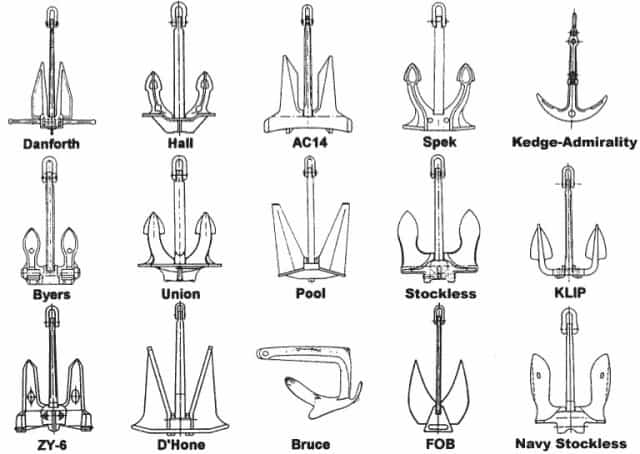
What is the best type of anchor.
One with a very very long rope or chain is the simplistic answer.
Mud or Rock
Fisherman’s anchor drag through mud but get caught on rocks and sand.
There many modern designs but common for yachting are Danforth and Bruce anchors and they work well in mud and sand but may bounce over rocks.
The 7 times table
How much chain to use?
You need to know the maximum depth of water during your stay in the anchorage. Check you tidal calculations carefully.
The answer is 7 times your max depth, this ensures a good catenary, and ensures the anchor head does not accidentally lever the anchor out of the ground.
Good sailing and good holding ground for your anchoring.

